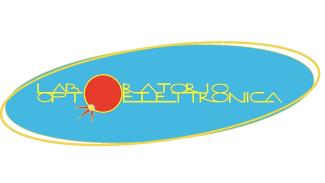Optoelectronics Laboratory
The Optoelectronics Laboratory exhibits expertise in the modeling, design, simulation, fabrication, and characterization of optoelectronic, photonic, and nanoelectronic components, devices, and systems. Activities encompass the micro- and nano-scale, including the investigation of physical effects and the development of components for multiple application areas. Core competencies reside in Integrated Photonics (IP), utilizing platforms such as Indium Phosphide (InP), Silicon Nitride (SiN), Silicon (Si), Lithium Niobate (LiNbO3), and polymers. Capabilities also include Radio Frequency (RF)/Mixed-Signal circuit and system design, digital embedded system design, and the development of algorithms suitable for hardware implementation.
Research activities are primarily directed towards Aerospace, Health & Biomedical applications, and Telecommunications.
I. Aerospace Systems and Technologies:
- Inertial Navigation Systems: Development focuses on miniaturized optoelectronic gyroscopes utilizing integrated optical technologies, such as high-Quality factor (Q-factor) ring resonators and photonic crystals, intended for space applications. This includes the design and development of associated readout electronics.
- Satellite Payloads and Subsystems:
-
- Earth Observation: Research encompasses Photonic Synthetic Aperture Radar (SAR) and Distributed SAR (DSAR) systems. This involves MWP components like optical beamformers, Linearly Chirped Microwave Waveform (LCMW) generators, and studies into on-board data processing using photonic Fast Fourier Transform (FFT) approaches. Light Detection and Ranging (LiDAR) system design is also investigated.
-
- Space Communications (TLC): Activities include the development of photonic elements for telecommunication payloads, such as transceivers, Opto-Electronic Oscillators (OEOs), optical switching matrices, and reconfigurable RF microwave filters.
-
- Space Situational Awareness (SSA): Work is conducted on optical systems for autonomous collision avoidance and the monitoring of space debris.
-
- Electrical Power Systems (EPS): Investigation of systems for energy generation, including perovskite solar cells, and power management components like Point-of-Load (POL) DC/DC converters is performed.
- Astronaut Health and Safety: Systems are developed for monitoring astronaut health, including wearable suits integrating sensors (flex sensors, vital signs) and electrostimulation. Methods for assessing astronaut stress levels using physiological signals such as Electroencephalography (EEG) are also explored.
- Interplanetary Exploration: Human-Robot Interfaces (HRI) for the immersive control of lunar mobile platforms are under investigation. The project involves requirements definition, prototyping, and validation through simulation and prototype testing.
II. Health and Biomedical Applications:
- Biosensing Technologies and Lab-on-Chip (LoC) Microsystems: Design efforts target sensitive, label-free biosensors for diagnostic and monitoring purposes. Platforms investigated include photonic/plasmonic micro- and nano-cavities, ring resonators, Bragg gratings (polymer and fiber-based), metasurfaces, and Ion-Sensitive Field-Effect Transistors (ISFETs) for detecting ions. Integrated platforms are developed for biological sample analysis, incorporating functions for sorting, counting (e.g., extracellular vesicles, Circulating Tumor Cells (CTCs)), and sensing. Techniques explored include electrowetting and topological photonics. Optoelectronic microsystems are designed for real-time monitoring of bacteria and biofilm dynamics, relevant to the study of AMR.
- Optical Trapping: Hybrid photonic/plasmonic structures are designed as nanotweezers for the trapping and manipulation of nanoscale biological entities (e.g., viruses). Multiplexed trapping using metasurfaces is also investigated.
- Wearable Health Systems: Low-cost wearable systems are developed for long-term health monitoring, incorporating sensors for physiological parameters, motion analysis (gait, posture), and muscle activity via surface Electromyography (sEMG). This involves the implementation of time synchronization protocols like the Fractional Low-Power Synchronization Algorithm (FLSA). "Smart Shoes" integrating Inertial Measurement Units (IMUs) and pressure sensors are also a subject of research.
- Prosthetics Interface: Haptic feedback systems are studied to improve interaction with prosthetic devices.
III. Telecommunications and RF Systems:
- Microwave Photonics (MWP): Photonic techniques are applied to RF signal generation, processing, filtering, and beamforming within communication systems.
- RF and Mixed-Signal Design: Activities include the design of circuits and systems relevant to telecommunication applications.
Laboratory website to: https://www.optoelectronicslaboratory-poliba.it
